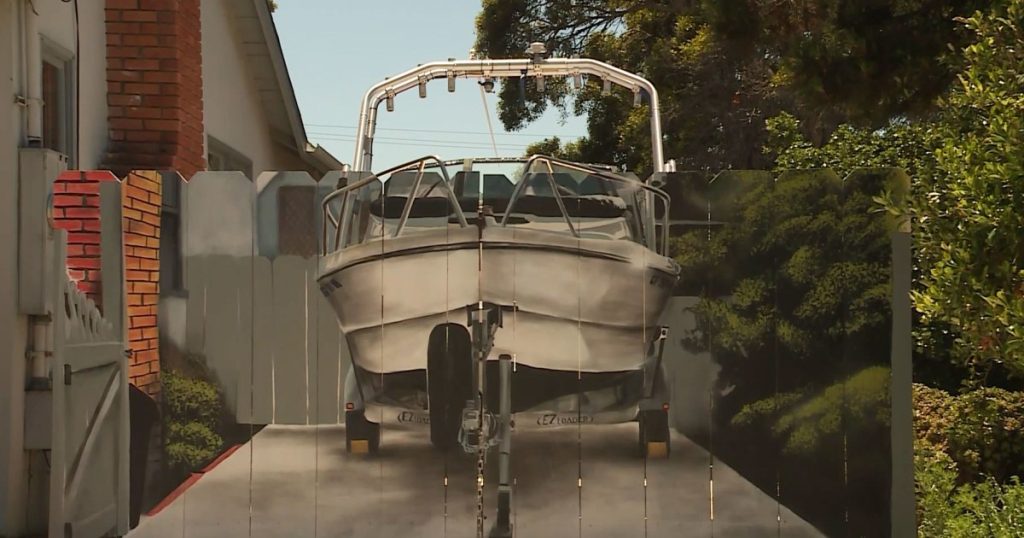Etienne Constable, a man from Seaside, California, received an order from local government officials to build a 6-foot fence to hide his boat from view of his neighbors. Instead of simply following the directive, Constable decided to have some fun with it. He commissioned local artist Hanif Panni to paint a realistic image of his boat on the fence, making it appear as if the boat wasn’t there at all. Constable wanted to make a political, humorous, and creative statement through this unique form of decoration.
Constable’s decision to paint a mural of his boat on the fence was a light-hearted jab at officialdom. He stated that he is not a rule-breaker, but he wanted to express himself creatively in response to the government order. Despite the city’s directive to conceal the boat, there was no stipulation on how the fence should be decorated. Constable saw this as an opportunity to exercise his right to freedom of expression as protected by the First Amendment. The mural has generated quite a bit of attention on social media, with many people appreciating the humor and creativity behind the idea.
Since having the boat mural painted on his fence, Constable has not received any feedback from the city regarding the artwork. He believes that the mural falls under the category of public art and as such should be protected as a form of self-expression. The artist, Hanif Panni, who worked on the mural, expressed his support for public art as a means to engage people and spark conversations in a unique way. Through this project, both Constable and Panni have managed to generate unexpected attention and positive reactions from the public.
The boat mural, painted by Hanif Panni, has become a source of amusement and admiration in the Seaside community. The realistic depiction of the boat on the fence has drawn people’s attention and sparked conversations about creative expression and freedom of speech. Panni, as a proponent of public art, sees the mural as a way to engage with people in a manner that traditional forms of communication may not achieve. By turning a mundane government directive into a visually striking piece of art, Constable and Panni have successfully transformed their surroundings and brought a touch of creativity to their neighborhood.
The innovative decision to paint a mural of a boat on a fence in response to a city directive showcases the power of art to challenge authority and spark dialogue. Constable’s choice to use his creative freedom as a form of protest against government regulations has resonated with many people, leading to widespread appreciation and admiration for his initiative. The mural serves as a reminder of the importance of self-expression and artistic freedom in society. Through this project, Constable and Panni have not only transformed a mundane fence into a piece of public art but also inspired others to think creatively and boldly express themselves in the face of restrictions and regulations.
In conclusion, the boat mural painted on a fence in Seaside, California, stands as a testament to the power of creativity and self-expression. Constable’s decision to turn a government directive into a humorous and politically charged statement has captured the imagination of many, sparking discussions about art, freedom of speech, and individuality. The collaboration between Constable and Panni has showcased the transformative potential of public art in engaging communities and challenging established norms. By embracing artistic expression in defiance of conventional rules, Constable has not only brought a smile to people’s faces but also highlighted the importance of challenging authority through creative means.


